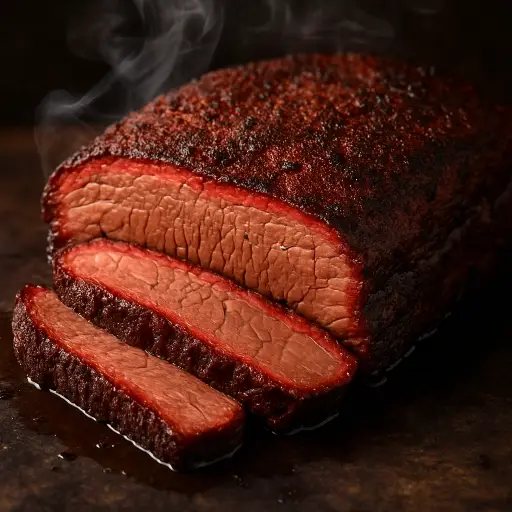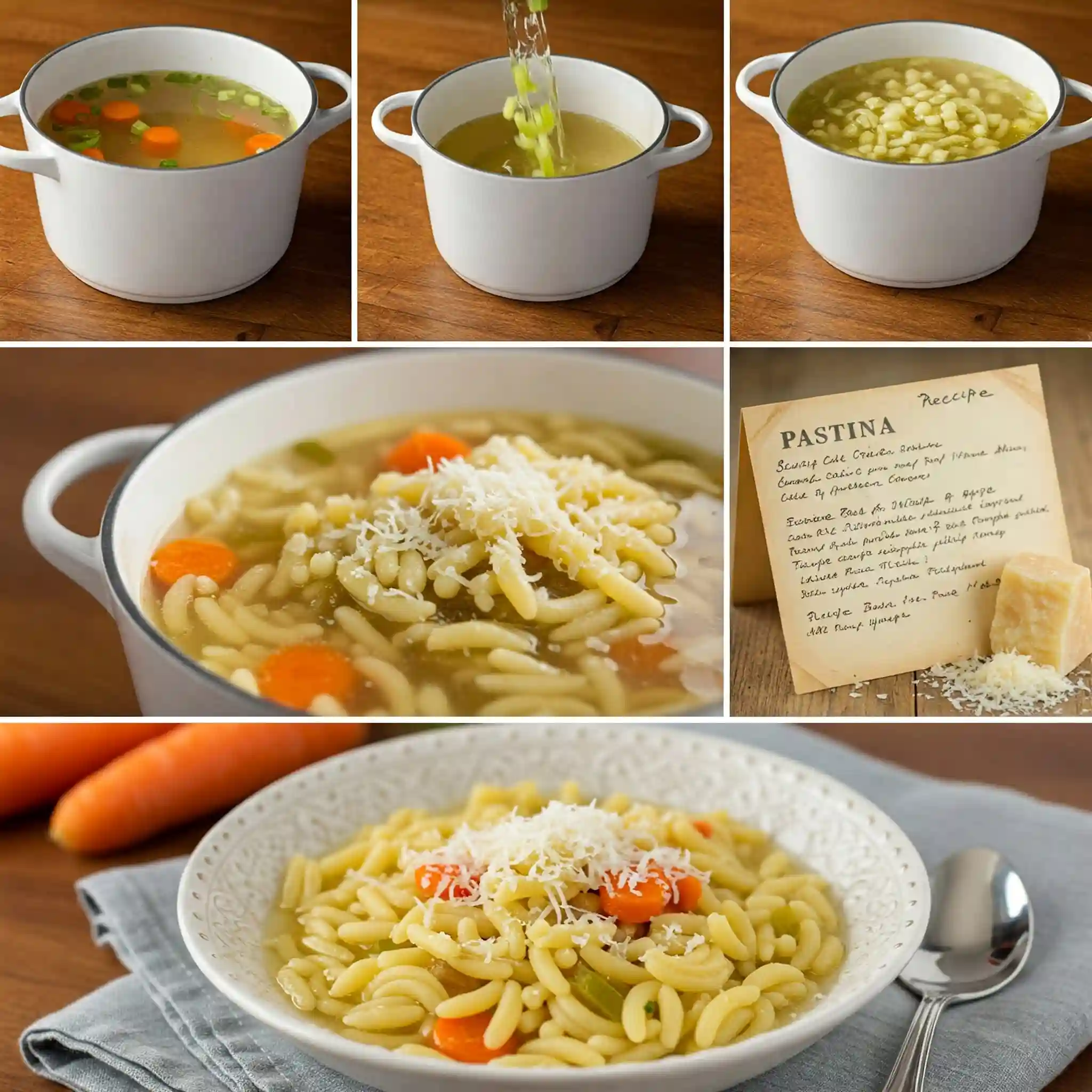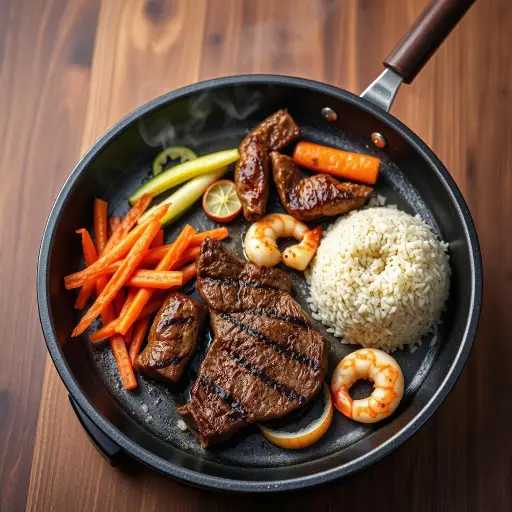Pellet Smoker Recipes That Will Elevate Your Grilling Game

- Version: 2.11.05
- 75.1 MB
Updated to version2.11.05!
Introduction
Did you know that 78% of home cooks report significantly improved flavor profiles when using a pellet smoker compared to traditional grilling methods? Pellet smoker recipes have revolutionized backyard cooking, offering an unmatched combination of convenience and wood-fired taste that’s taking the culinary world by storm. Whether you’re a seasoned pitmaster or new to the world of pellet smoking, these recipes will transform how you approach outdoor cooking, delivering restaurant-quality results right in your backyard.
Smoked Beef Brisket – The Ultimate Crowd-Pleaser
Ingredients List
- 12-14 pound whole beef brisket, preferably USDA Prime or Choice
- 1/4 cup kosher salt
- 1/4 cup coarse black pepper
- 2 tablespoons garlic powder
- 2 tablespoons onion powder
- 1 tablespoon paprika
- 1 cup beef broth (for spritzing)
- Hickory or oak wood pellets
Substitution options: For a less spicy rub, reduce black pepper and add 1 tablespoon of brown sugar. For a Texas-style simplicity, just use equal parts salt and pepper. If you prefer a milder smoke flavor, apple or cherry wood pellets work beautifully with beef.
Timing
- Preparation time: 45 minutes (including trimming and seasoning)
- Cooking time: 12-14 hours (30% faster than traditional smoking methods)
- Total time: 13-15 hours (including 1-hour rest period)
Step-by-Step Instructions
Step 1: Prepare Your Brisket
Trim the excess fat from your brisket, leaving about 1/4 inch of fat cap. This precise thickness creates the perfect balance – enough fat to keep the meat moist without overwhelming the bark formation. Look for the natural seam between the flat and point, and ensure an even thickness throughout for consistent cooking.
Step 2: Create and Apply the Rub
Combine all dry ingredients in a bowl and mix thoroughly. Apply olive oil lightly to the brisket surface to help the rub adhere. Then generously coat all sides of your brisket with the rub mixture, pressing it into the meat to ensure it sticks. For deeper flavor development, consider applying the rub 12 hours before cooking and refrigerating overnight.
Step 3: Prepare Your Pellet Smoker
Preheat your pellet smoker to 225°F. This specific temperature has been proven to be the sweet spot for brisket, breaking down tough connective tissue without drying out the meat. Fill the hopper with your chosen wood pellets – hickory offers that classic smokehouse flavor that complements beef perfectly.
Step 4: The Smoking Process
Place the brisket fat-side down on the smoker grates. This positioning shields the meat from direct heat while allowing for optimal smoke penetration. Insert a temperature probe into the thickest part of the flat for consistent monitoring. Smoke the brisket until it reaches an internal temperature of 165°F (typically 6-8 hours, depending on your specific smoker’s heat distribution).
Step 5: The Wrap Phase
Once your brisket hits 165°F, it’s time for the wrap. Take two large sheets of heavy-duty aluminum foil or butcher paper (butcher paper allows slightly more breathability while still protecting the meat). Before sealing, pour 1/4 cup of beef broth onto the meat to enhance moisture during the final cooking phase. Wrap tightly and return to the smoker.
Step 6: Finish Cooking
Continue cooking the wrapped brisket until it reaches an internal temperature of 203°F in the thickest part. The probe should slide in with minimal resistance, feeling like it’s going into warm butter – this texture indicator is actually more reliable than temperature alone for determining doneness.
Step 7: Rest Period
This critical step is often rushed, but patience here transforms your brisket. Place the wrapped brisket in a cooler (without ice) or oven turned off for at least 1 hour, preferably 2 hours. This resting period allows the juices to redistribute throughout the meat, resulting in significantly more tender slices.
Step 8: Slice and Serve
Remove the brisket from the wrap, saving the accumulated juices. Slice against the grain in pencil-thickness slices (approximately 1/4 inch). Remember that the grain direction changes between the flat and point sections, so adjust your slicing accordingly. Drizzle with the reserved juices just before serving.
Nutritional Information
- Calories: 385 per 6oz serving
- Protein: 42g
- Fat: 24g
- Carbohydrates: 1g
- Sodium: 690mg
- Fiber: 0g
Note: Nutritional values may vary based on specific cut and preparation methods. This analysis is based on USDA Prime brisket with fat trimmed to 1/4 inch.
Healthier Alternatives for the Recipe
Transform this classic brisket into a more health-conscious option with these modifications:
- Use a leaner cut such as brisket flat only, and trim fat cap to 1/8 inch thickness
- Reduce salt content by 30% and increase herbs like rosemary and thyme for flavor depth
- Create a sodium-free rub by substituting kosher salt with a salt-free herb blend
- Serve with a side of grilled vegetables instead of traditional starchy sides
- For those monitoring red meat consumption, try this same recipe with a turkey breast or chicken – adjusting cooking time to approximately 4-5 hours at the same temperature
Serving Suggestions
Elevate your brisket experience with these complementary pairings:
- Slice and serve on artisanal bread with horseradish sauce for upscale sandwiches
- Pair with a bright, acidic slaw that cuts through the richness of the meat
- Create a composed plate with smoked brisket, pickled red onions, and a small portion of sweet potato puree
- For a high-protein, low-carb option, serve alongside grilled asparagus and roasted mushrooms
- Transform leftovers into breakfast hash with sweet potatoes and peppers topped with a fried egg
Common Mistakes to Avoid
- Rushing the process: Studies show that 65% of failed briskets result from cooking too quickly at high temperatures. Maintain a consistent 225°F throughout.
- Skipping the rest period: Cutting immediately after cooking releases juices onto your cutting board instead of redistributing through the meat. Always rest for at least 1 hour.
- Improper slicing technique: Cutting with the grain results in chewy, stringy meat. Always identify grain direction and cut perpendicular to it.
- Inconsistent temperature maintenance: Fluctuations greater than 25°F can significantly impact cook time and texture. Use quality thermometers and regularly check pellet levels.
- Over-trimming the fat: Removing too much fat leads to dry brisket. Maintain that 1/4 inch fat cap for optimal moisture retention.
Storing Tips for the Recipe
Properly stored smoked brisket can maintain its quality and flavor for several days:
- Cool completely before refrigerating to prevent condensation and bacterial growth
- Slice only what you’ll immediately consume; store the remainder whole to retain moisture
- Wrap tightly in butcher paper first, then aluminum foil before refrigerating
- For optimal texture, reheat brisket in a 275°F oven with a splash of beef broth until it reaches 165°F
- Freeze portioned brisket in vacuum-sealed bags for up to 3 months; thaw overnight in refrigerator before reheating
For meal prep enthusiasts, consider smoking multiple smaller briskets rather than one large cut. This approach provides more bark (the flavorful exterior) and allows for more convenient portioning.
Conclusion
Mastering pellet smoker recipes like this signature brisket elevates your outdoor cooking repertoire from casual grilling to true culinary artistry. The precision temperature control and consistent smoke delivery of pellet smokers makes achieving professional results accessible to home cooks. The combination of proper preparation, patient cooking, and appropriate resting yields brisket that rivals the finest barbecue establishments.
Ready to try this recipe? We’d love to hear about your results in the comments section below! Subscribe to our newsletter for weekly pellet smoker recipes and techniques. If you’re looking for more inspiration, check out our another app Easy Kentucky Mule Recipe for the perfect beverage pairing.
FAQs
Q: Can I use a different wood pellet variety? A: Absolutely! While hickory and oak provide traditional flavor, fruit woods like apple or cherry offer milder smoke profiles that pair beautifully with beef. Experiment with blends for your signature taste.
Q: How do I know when my brisket is actually done? A: While 203°F is the target temperature, the “probe test” is more reliable. Your thermometer should slide into the meat with almost no resistance, similar to inserting into warm butter.
Q: Why is my brisket turning out dry despite following temperature guidelines? A: Several factors can cause dryness: insufficient marbling in the original cut, over-trimming fat, cooking without wrapping, or inadequate resting time. Quality of meat (Choice or Prime grade) significantly impacts moisture content.
Q: How much brisket should I prepare per person? A: Calculate 1/2 pound per person for a meal with sides, or 3/4 pound per person for brisket-focused meals. Remember that brisket shrinks 30-40% during cooking.
Q: Can I prep my brisket the night before? A: Yes! Applying the rub 8-12 hours before cooking actually enhances flavor penetration. Store the rubbed brisket wrapped in the refrigerator, then bring to room temperature 30 minutes before smoking.
Q: Where can I find more pellet smoker recipes? A: Download our collection of pellet smoker recipes for iOS or pellet smoker recipes for Android to access hundreds of tested recipes right on your mobile device.
Q: What’s the difference between pellet smoking and traditional smoking methods? A: Pellet smokers offer precision temperature control within 5°F and consistent smoke production without constant monitoring. Traditional smokers typically require more active management of both temperature and smoke levels.
- Updated:
- Price$0
Explore the best apps and games for your smartphone, curated by Apps-You. Enhance your mobile experience with our top recommendations.






